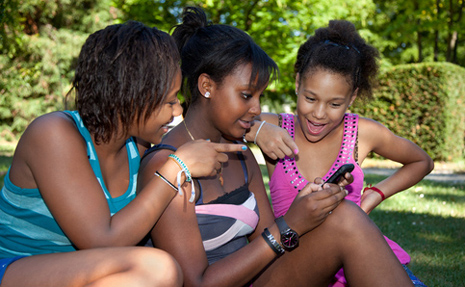Social media have become an essential component of teenage life, from early adolescence through the college years. We examine how teens master the use of social media and how their use is modified to fit the changing developmental demands of the teen years.
Mastering Social Media Project
Social Media and the Transition to High School Project
Social Media and College Adjustment Project
Mastering Social Media
To become adept at the use of social media, early adolescents must figure out which media to use, how and when to use them. Social media are powerful tools to connect to peers and find one’s place in adolescent society, but also to bully others or become preoccupied with popularity and peer acceptance. How do young people get started with social media use and how do these media shape their middle school experiences? To explore these issues we interviewed a diverse sample of 35 middle school students.
Key findings:
• Most middle schoolers begin using social media platforms well before age 13—supposedly the minimum age at which individuals can get an account. They gain access to social media with the help of parents, older sibs, friends, or just by falsifying information about themselves on applications to set up an account.
• Middle schoolers often begin using social media mostly by observing what others are doing. They want to learn what’s acceptable or expected before they begin posting information or responding to others’ posts.
• In 6th and 7th grade there is tremendous variability in how involved youths are in social media, what platforms they prefer, and how much they rely on social media to guide their interactions with peers.
• Parents tend to play an active role in guiding their middle school child’s use of social media, but there is a lot of variety in the specific strategies parents use to monitor the child’s social media use.
For more information, see our Study Newsletter.
Social Media and the Transition to High School Project
Can social media help young people negotiate the new academic and social challenges they encounter when they enter high school, or do they just complicate teens’ social life. We followed 35 teens across their freshmen year in high school to examine the role that social media played in their adjustment to high school.
Key findings:
• Nearly all freshmen have smart phones, but not all freshmen are wired into social media.
• Popularity striving (aiming for lots of “likes,” lots of friends or followers, lots of streaks, etc.) seems to diminish across freshman year.
• Most teens are careful what they post and where they post it. Many (especially girls) have Finstas or other restricted accounts where they post pictures or comments they wouldn’t want anyone but close friends or trusted peers to see.
• Most freshmen are willing to follow parents’ guidelines about limiting phone use, so long as rules are reasonable (e.g., leaving phones “out of reach” at bedtime).
• Instagram, Snapchat, and Youtube are popular platforms, but most youths have several social media accounts. Collectively, they use a wide variety of apps.
Social Media and College Adjustment
College is an opportunity to change or reaffirm one’s identity and reorganize one’s social and support networks. Social media can play a key role in these processes, especially as young people make the transition from home to college life. We study media use among a general population of college students in different college environments. We consider how social media use can affect identity development, pursuing friendships and romantic relationships, and accruing social capital.
Key findings:
• There are norms about which media to use at different points in a relationship. Using the wrong media at the wrong time and short-circuit a budding friendship or romance. (See Yang & Brown, 2012).
• The more that Chinese college students disclose about themselves on social networking sites, the more bridging social capital they gain. That’s also true for bonding social capital, but it depends on the number of positive responses students get to what they post (see Liu & Brown, 2014).
• Do college students suffer if they spend a lot of time on line playing games or seeking online (vs. face-to-face) relationships? It depends on their motives for using social media. (see Yang & Brown, 2014).

